From pv magazine 12/2019
With the South Korean Ministry of Trade, Industry and Energy’s (MOTIE) investigative report into the fires now done and dusted – and leading manufacturers such as Samsung SDI and LG Chem announcing new safety and fire-suppression measures – it is clear that the industry is on the right path forward. Nonetheless, as the year draws to a close, it still does not appear that the Korean storage market will bounce back anytime soon.
David Kang, associate at BloombergNEF, says South Korea will probably only install around 500 MWh of new storage capacity in 2019, or possibly even less. That’s “around a quarter of what we saw” last year, he observes. “The fires have completely destroyed the market this year.”
Data from IHS Markit show that annual installations surpassed 900 MW in 2018, but the market research firm expects this year’s additions to fall within roughly the same range as BloombergNEF. It initially expected the Korean market to bounce back by the third quarter of 2019, following a moratorium on development during the government’s investigation into 23 system fires, which actually started in August 2017 and continued through to May 2019, when the MOTIE probe was already underway.
However, a string of at least five new system fires in the months since MOTIE released its investigative report in June has done little to bolster market sentiment or assuage the safety fears of the general public. Between late August and late September, for example, blazes broke out in storage systems at two PV plants and one wind farm, including one incident in Chungcheongnam province that Seoul-based daily Chosun Ilbo says caused roughly KRW 520 million ($442,700) in damages. For an industry already reeling from the impact of the initial series of 23 incidents – including 14 fires involving systems paired with PV arrays – the path to recovery clearly remains a significant challenge.
“As a result of the investigation, almost no systems were installed in the first half of the year,” says Michael Longson, analyst for IHS Markit. “[The] recent fires have caused the market to continue stalling, and IHS Markit expects to reduce its near-term forecast.”
Fiery findings
MOTIE reached a handful of broad conclusions in its investigative report into the original series of 23 fires. By taking systems apart and examining components, it identified a number of potential manufacturing defects, and determined that some systems likely lacked sufficient protections against electric shock. It also used moisture, dust, and salt mist tests to identify weaknesses in environmental oversight of battery systems.
In addition, MOTIE highlighted the issue of poor installation practices, which is understandable, given how quickly South Korea became one of the world’s leading markets for energy storage. But perhaps most critically, the ministry noted problems that potentially arise when installers combine energy management and control system components from different manufacturers – even when such parts are not designed to be used as elements of an integrated system.
Based on its findings, MOTIE came up with a number of safety guidelines for new and operational storage systems and revealed plans for a new safety certification for lithium-ion batteries in stationary storage applications. It also placed a capacity limit of 600 kW on indoor installations, and introduced requirements for environmental control systems and additional protective measures to prevent the risk of electric shock.
MOTIE said it would require operations and maintenance inspections for stationary storage systems on an annual basis, from a current requirement of every four years, with the assessments to be confirmed by multiple parties. The ministry also created a new classification system for battery storage blazes in its fire code, with specific standards to be rolled out throughout the latter months of 2019. And it vowed to help firefighters by launching studies on the best fire-extinguishing agents to use in response to fires at stationary energy storage systems.
Direct impingement
Major South Korean manufacturers quickly took note of the government’s recommendations. Samsung SDI – which posted a net profit of KRW 745 billion ($632.5 million) in fiscal 2019, up 8.1% year on year – vowed in October to invest up to KRW 200 billion to make its energy storage systems safer. It has also developed a new fire-extinguishing system for its storage products that uses undisclosed chemicals to quickly extinguish flames. It plans to introduce the features in its new products and aims to invest in upgrades for 1,000 operational systems throughout South Korea.
Preventing thermal runaway – when stored chemical energy changes to thermal energy at a speed and scale that surpasses the dissipation rate of a battery cell – and suppressing fire outbreaks in energy storage systems can be quite challenging, according to Ben Kaun, program manager for energy storage and distributed generation for the Electric Power Research Institute (EPRI).
“You have to get the fire-suppressing agent into the module in order to act on it. So you have to get the water on the heat. And that’s a challenge – if you don’t have direct impingement,” he said, noting that ceiling-mounted sprinkler systems may not always thoroughly douse burning cells or modules. “Once thermal runaway is truly in process past the point of no return, it’s not something that is easily stopped. It’s not really stopped until the process is completed. So suppression techniques are often focused on stopping the propagation from module to module, rack to rack or container to container.”
Samsung SDI’s chief domestic rival, LG Chem, has also vowed to improve the safety of its energy storage systems, particularly with regard to fire risk. It has been a bit more vague about its specific plans than Samsung SDI, but recent Korean media reports suggest that the manufacturer will likely spend at least KRW 100 billion on safety upgrades, including a fire prevention system with module-specific sprinklers. LG Chem Vice President Kim Joon-ho also recently said that the company would recall batteries if it started seeing problems with its energy storage systems in overseas markets.
Samsung SDI and LG Chem have also achieved compliance with UL9540A, the first system-level fire behavior propagation test for the storage industry. UL9540A is a characterization test that assesses measurable impacts of thermal runaway on cells, modules and systems, without any pass-fail criteria. Along with the NFPA 855 standard, the UL9540 standard and UL9540A test provide design guidelines for energy storage systems, including installation issues related to fire-suppression systems and the spacing between modules, depending on battery chemistry.
“It’s good to have a standard test because there is something we can measure and compare and start to develop some assessments – some data basis for assessing safety. But there is still room to go in terms of clarifying what that means for acceptable risk,” says Kaun, adding that a “second layer of work” still needs to be done across the global industry to translate data into firm standards.
Near term
UL9540A compliance is an important step forward for Samsung SDI and LG Chem, and sends a clear signal to the beleaguered South Korean storage market. That said, the standard is currently most relevant to the U.S. market, notes BloombergNEF’s Kang, and its impact in South Korea will likely be limited – particularly in the near term.
“Even if the batteries prove to be safe, it is clear that other factors such as system integration, operating conditions, construction methods, etc., can still cause fires for domestic projects,” he explains. “A more holistic and clear safety solution would be required to re-boost the Korean market.”
The two main subsidies driving stationary storage deployment in Korea probably won’t help the market much in the short term, either. The government provides high multipliers for storage systems that are paired with renewables. However, the government will likely reduce the multiplier for solar from 4.5 at present to 4.0 from July 2020.
The Korean authorities also offer retail rate discounts for commercial and industrial storage systems, but with a set deadline that Kang says is making fresh C&I deployments “increasingly less attractive”. BloombergNEF therefore expects market development to continue to slow down in the years ahead, unless the government extends the deadline.
“The continued fires have completely halted the market since June, regardless of policy signals,” Kang concludes. “The government will likely re-adjust the current subsidy measures after new safety measures have been reliably implemented.”
Despite the grim outlook for the South Korean storage industry over the short term, foreign manufacturers are circling around the stalled market like sharks, eager to gain a foothold while the chips are still down. South Korean media outlets reported in October that Tesla, for example, is actively trying to secure a certificate from the Korea Battery Industry Association to sell energy storage systems on the peninsula. Chinese battery giant Contemporary Amperex Technology Ltd. (CATL) is also said to be eyeing the Korean energy storage market with its lithium iron phosphate (LFP) batteries. And given all the bad press that local players like Samsung SDI and LG Chem have suffered amid the rash of fires, the appetite for foreign products may be high.
“Customers are definitely looking into alternative options. Chinese LFP firms have already applied for safety certification in Korea and we’re seeing growing market interest from local [system integrators],” says Kang. “Although the interest hasn’t materialized into meaningful installation numbers yet, it will become increasingly difficult for local developers and potential C&I customers to rule out Chinese made LFP batteries, especially given the technology’s competitive edge in fire safety.”
This content is protected by copyright and may not be reused. If you want to cooperate with us and would like to reuse some of our content, please contact: editors@pv-magazine.com.
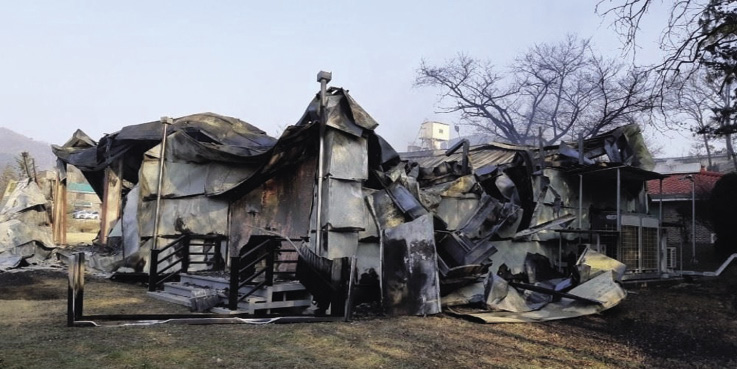


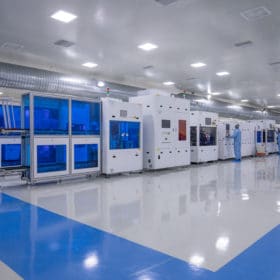
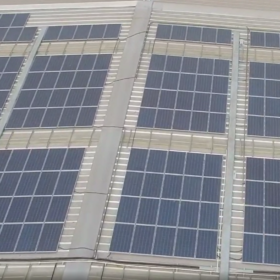
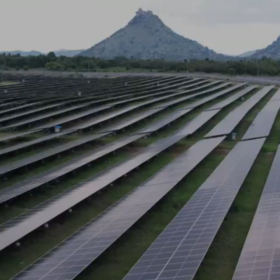
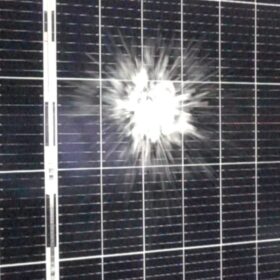
By submitting this form you agree to pv magazine using your data for the purposes of publishing your comment.
Your personal data will only be disclosed or otherwise transmitted to third parties for the purposes of spam filtering or if this is necessary for technical maintenance of the website. Any other transfer to third parties will not take place unless this is justified on the basis of applicable data protection regulations or if pv magazine is legally obliged to do so.
You may revoke this consent at any time with effect for the future, in which case your personal data will be deleted immediately. Otherwise, your data will be deleted if pv magazine has processed your request or the purpose of data storage is fulfilled.
Further information on data privacy can be found in our Data Protection Policy.